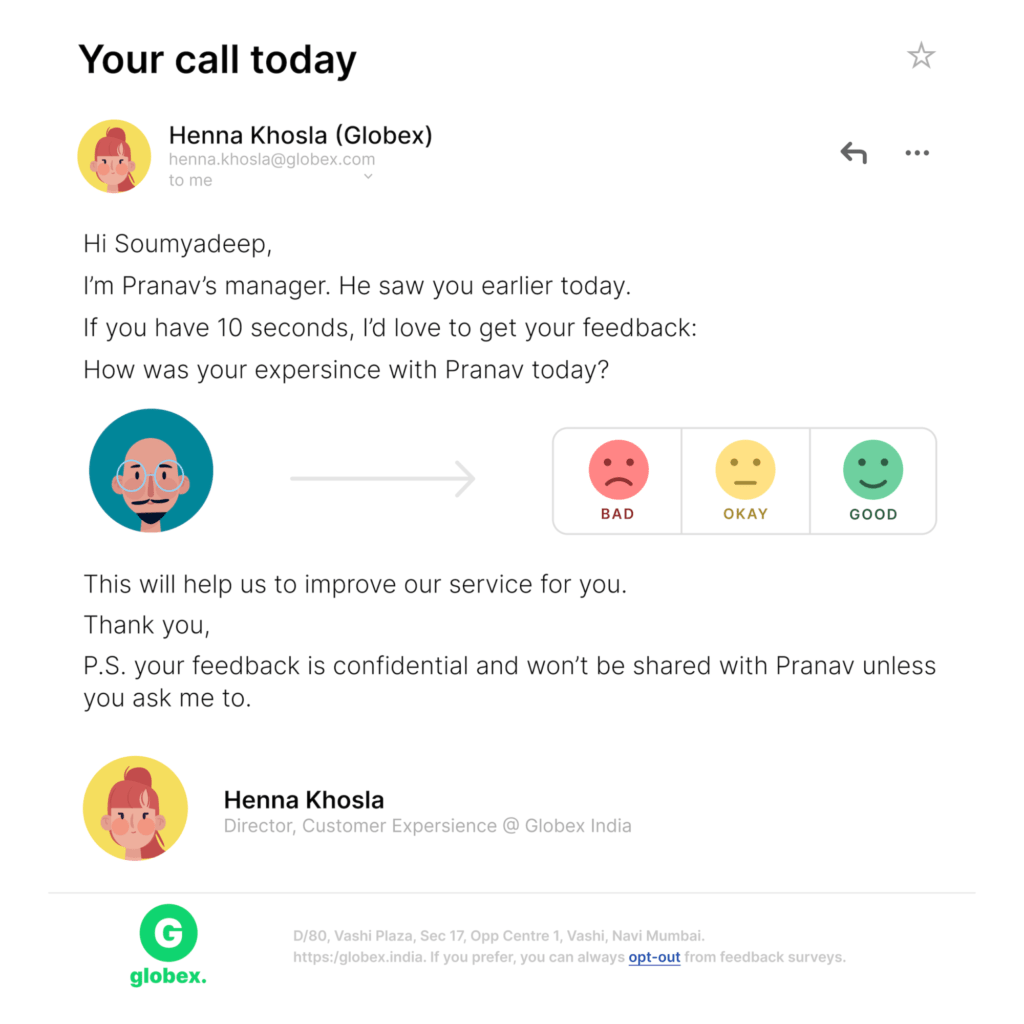Loyal customers are happy customers - they drive more value and they stick with you for a longer time.
However, they also have a lot of options and they will make a switch in a heartbeat if they feel they are not being heard.
According to the Salesforce State of Connected Customer Report (2022), 71% of consumers switched brands at least once in the past year.
While better deals (66%) and product quality (58%) are the primary drivers of brand defection, myriad additional factors such as improved customer service (48%), product availability (46%), and convenience (44%) lure consumers away.
According to a survey by PwZ, 65% of customers surveyed say that a positive experience is more important to them than good advertising, which makes them loyal customers of a company.
So, how do you keep loyal customers?
You ask them what makes them happy and you ask them what makes them sad and the best way to do both is take more qualitative and quantitative feedback and make sure that the feedback is not rotting away in an excel file somewhere.
Of course, there are 1,000 other reasons to do customer surveys, but one of the best uses is for conversion research – to uncover insight to generate better hypotheses. But if you’re doing them wrong, you’re missing out on that insight.
Not too long away, a feedback email from a very prominent Indian DTC brand arrived in my inbox and my first reaction was:

Prior to receiving this email, I had a conversation with the customer service team from that brand and though my query was resolved within the next few hours, I was not very satisfied with the response and I wanted to provide some feedback to the brand.
When I got their email, I did provide feedback. Alas! I did not do it because the survey request was done very well. I did it because it is a personal hobby of mine to read through branded materials (email, checklists, surveys etc.) and analyse them. I always want to deep dive heavily into the interaction of brands vis-a-vis their buyer.
While doing this, I came to the realisation that brands, while being very neat about almost every other business process, miss the mark on learning from customers.
Listening To Your Customers
Listening to your customers enables us to peek inside the mind of the people we’re trying to sell to. Without knowing what they’re thinking, we’re in the dark. We can speculate all we want but it’s not going to get us anywhere.
Jen Havice, World Renowned Messaging and Customer Researcher
No single article can cover survey analysis for every type of research. The ideas in this post apply broadly to types of surveys that seek to understand how people feel about your company, product, or service and why they feel that way.
To have a more contextual post, I would like to reference the survey I received, which was a type of binary survey which generally tend to have questions like Yes/No, True/False, Agree/Disagree and similar.
Companies do this to get the benefit of these questions being simple, easy and short. They are useful in such cases when there are only and only two possible answers, but at the same time binary questions tend to force the consumer or respondent to make a choice between two options, regardless of whether or not they truly agree with that choice.
However, having spoken about the pros and cons of similar surveys, to further dive into the fairness of the question is a battle I pick for another day.
I will start with the assumption that the brand in this case has been using this for a long time and it would be unfair to them if I start commenting on the validity of this line of questioning.
Rather, I would dive into this email and provide some qualitative feedback on the same.
Lack of Personalisation:
The brand in this case has my name, email, my purchase history and a record of the problems I have ever faced. In this case, I was being addressed with my email credentials, and there was no reference to my personal journey.
Personalisation can even be called a “hygiene factor”: customers take it for granted, but if a retailer gets it wrong, customers may depart for a competitor.
Contextual:
The question was not framed around my personal journey. On this occasion, I interacted with a salesperson, and the communication was about a change of address and a cancellation/replacement order.
While the inclusion of the context would have helped me give a more oriented feedback, the brand could have used that data to actualize the feedback into a change/redressal mechanism.
Sender:
If possible (and legal in your context), they should have used a human sender (e.g., james@company.com vs. marketing@company.com). People care disproportionately about an individual compared to a vague group.
Take the famous “Saving Private Ryan” or “Titanic” example. In both cases, people have cared more about the person (singular) than the effect of war or a drunken ship in general (abstract group).
Subject line:
They could be better with their subject line. Most email surveys suffer from the Law of Shitty Clickthroughs because they have been abused.
I see tons of “We’d love your feedback” emails in my inbox, which my brain instantaneously filters out.
By tweaking a few simple things, I present an alternative to the original email.

If not anything, you try another experiment and you fail, but even if you fail more than competition you are making more progress.
You want experimentation. Every once in awhile, you stumble upon something that blows your mind. –
Jeremy Stoppelman, CEO of Yelp






